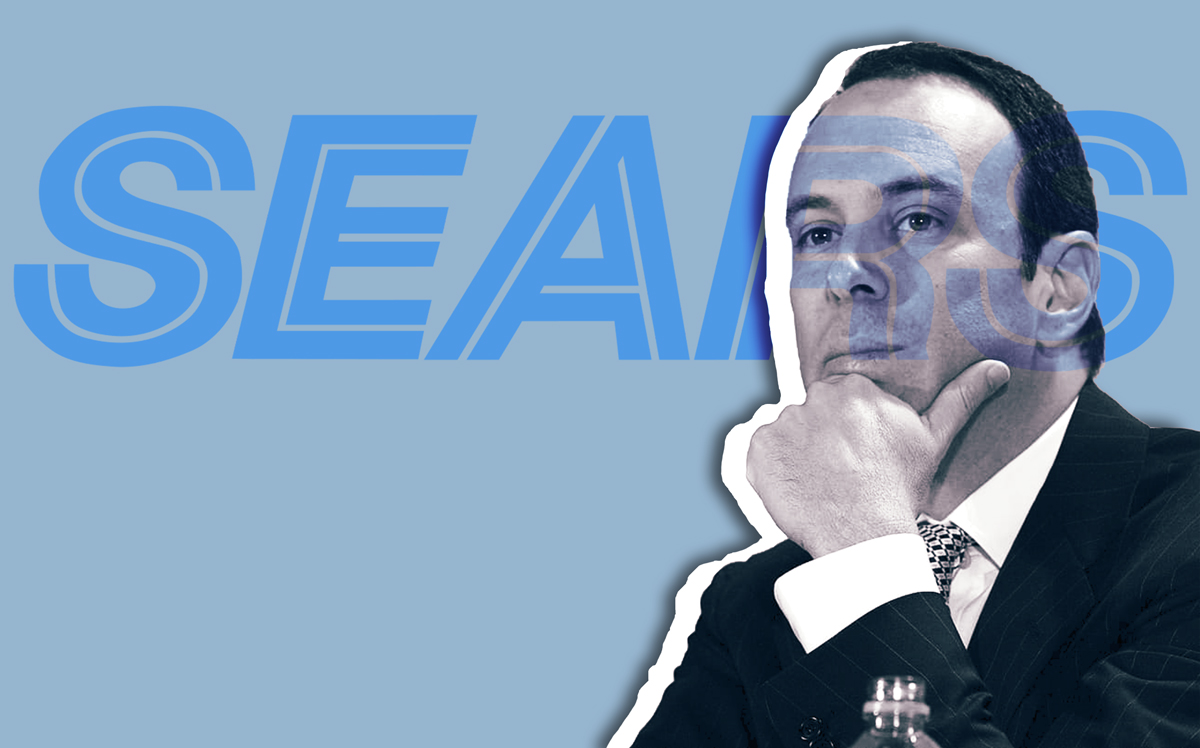UPDATE, April 18, 3:30 p.m.: Sears is suing former CEO and current Chairman Edward Lampert, claiming he and other company officials made billions off the failing retailer as it slid into a “death spiral” that ended in bankruptcy.
The suit alleges Lampert and the other named defendants sold off Sears assets and pocketed the proceeds in their roles as major company stockholders, even as the company struggled to pay its bills. The lawsuit was filed in U.S. Bankruptcy Court in the Southern District of New York on Wednesday.
Lampert stepped down as Sears CEO in October after the company filed for bankruptcy, but remained its chairman and largest shareholder. In January, a bankruptcy judge approved Lampert’s $5.2 billion bid to take over the company, which included plans to save 425 stores.
Among the issues cited in the suit was Sears’ decision to sell 266 of its “premier” stores to Seritage Growth Properties, the REIT set up to oversee the company’s real estate holdings. The 2015 deal allowed shareholders — including majority shareholder Lampert — to invest in Seritage and for Sears to lease back the stores from Seritage.
The deal was “intended to transfer value to Sears’ shareholders and therefore divert that value from creditors,” according to the suit.
It resulted in $399 million in value being transferred from Sears to Lampert and the other shareholders. They then traded their excess rights plus cash to Seritage in exchange for interests in other, more valuable classes of Seritage stock and interests in Seritage’s real estate holdings.
The purchase price also undervalued the stores sold to Seritage by $649 million, and was based on appraisals by Cushman & Wakefield approved by Lampert and other board members.
“The appraisals were fundamentally flawed and, among other things, intentionally used under-market future lease rates as the sole basis for their valuations,” the suit said.
A spokesperson for Cushman & Wakefield declined comment on the suit.
In a statement, Lampert’s firm, ESL Investments, said the suit “repeats baseless allegations and fanciful claims.” It added: “As we have previously said, the … allegations are misleading or just flat wrong,” the statement said.
The suit claims that the lease-back arrangement also hurt Sears because it allowed Seritage at any time to recapture up to half the square footage of each store. It also allowed Seritage to take over all of 21 stores, and required Sears to pay a penalty if it terminated the leases on any of the stores — which Lampert and his management team already intended to do, it claimed.
None of the terms of the deal with Seritage was negotiated, and the lease agreement terms were worth between $204 million and $409 million to the REIT.
“The Seritage transaction saddled Sears with hundreds of millions of dollars of rent and termination fees ultimately paid to Seritage and resulted in the ouster of Sears from many of its most profitable locations,” the suit said. “In the years since the transaction closed, Seritage thrived and paid handsome dividends to its investors — principally Lampert, the ESL shareholders, and the other culpable shareholders — while Sears’ financial condition continued to worsen.”
In total, the suit claims Lampert and the other defendants transferred $2 billion in Sears assets to themselves as shareholders, beyond the reach of creditors.
“Had defendants not taken these improper and illegal actions, Sears would have had billions of dollars more to pay its third-party creditors today and would not have endured the amount of disruption, expense, and job losses resulting from its recent bankruptcy filing,” the suit said.
The suit alleges Lampert and the defendants were looting the company while Sears was suffering billions of dollars of losses annually.
The chain “had not generated positive cash flow from operations for years — much less cash flow sufficient to pay principal and interest on its billions of dollars of debt. Sears, once one of the country’s dominant retailers, was falling further and further behind its competitors in a rapidly declining retail market,” the suit said.
By fiscal year 2014, “the Company was insolvent and had insufficient capital to remain in business, and Lampert and the other insider Defendants knew it.”
But the ESL spokesperson said the suit “completely ignores” that Sears’ market value ranged between $2.5 and $5 billion at the time of the transactions “which demonstrates the company’s solvency and supports the solvency opinions the company received from a notable expert in conjunction with such transactions.”
“In addition, the company received proceeds in excess of $3 billion from these transactions, all of which were applied to reduce debt and fund operations, and all of the referenced transactions treated every shareholder equally from an economic standpoint.”
Lampert and ESL were Sears’ largest shareholders when the transfers occurred, holding between 48% and 62% of Sears’ issued and outstanding stock. Fairholme Capital Management held between 15% and 25% of Sears’ stock, while Sears director Thomas Tisch held between 3.5% and 3.7% of Sears’ stock.
Among the other defendants named in the suit are Cesar L. Alvarez, a director of Fairholme’s parent company; Bruce Berkowitz, Fairholme’s founder and president; Kunal Kamlani, the president of ESL; and U.S. Treasury Secretary Steven Mnuchin, an investor in ESL and former vice chairman of the firm.
The suit seeks damages including “the billions of dollars of value looted from Sears,” and the return or the real estate, rental payments, and termination fees the defendants received.
The ESL statement pointed out the firm’s $2.4 billion in bailouts for Sears during Lampert’s tenure and said all asset sales were done in good faith.
“We are confident that the processes we followed for each of these transactions are unimpeachable,” it said. “We reject the debtors’ allegations and will vigorously contest their complaint concerning these transactions.”
